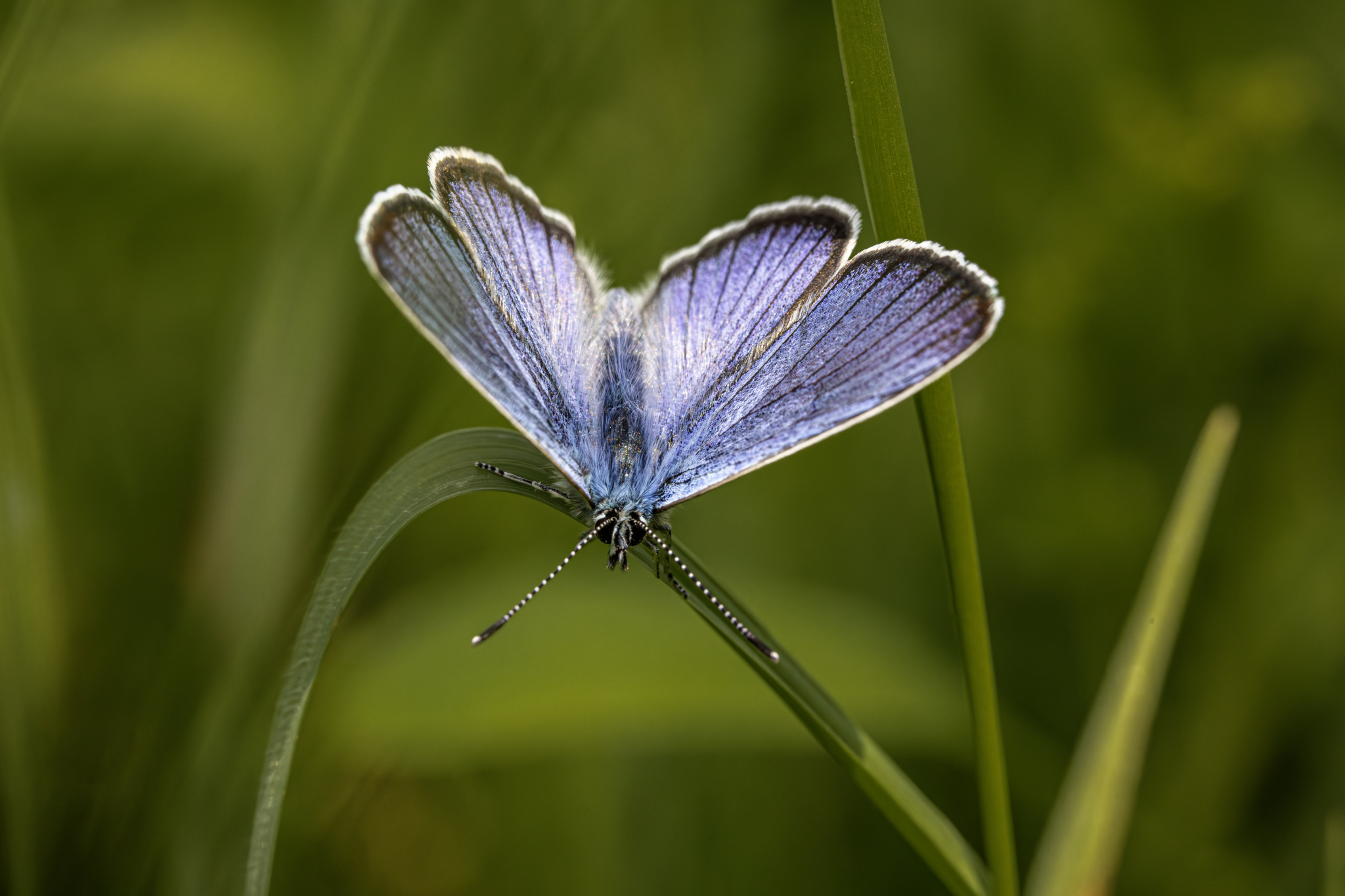Mazarine Blue (Cyaniris semiargus)
Here’s a detailed overview of the Mazarine Blue butterfly (Cyaniris semiargus) — a handsome, somewhat under-celebrated species of the “blues” family (Lycaenidae) — covering identification, distribution, life-history, and conservation.
🧬 Taxonomy & Naming
- Scientific name: Cyaniris semiargus (Rottemburg, 1775) (Wikipedia)
- Common name: Mazarine Blue (English) (Wikipedia)
- Belongs to family Lycaenidae (the gossamer-winged butterflies) with the subfamily Polyommatinae. (projects.biodiversity.be)
- The name “Mazarine” refers to a deep rich blue colour (historically associated with Cardinal Mazarin). (karits.eu)
🎨 Identification & Sexual Dimorphism
- Wingspan: Generally about 32–38 mm in many populations. (LEPIDOPTERA LIBANOTICA)
- Male: Upper-side of wings is a rich, deep violet-blue with narrow black border and crisp white fringes. Underside is greyish or grey-brown with small black spots ringed in white. (Wikipedia)
- Female: Upper side is mostly brown (sometimes with bluish base in fresh males/females), lacking the strong blue of the male. Underside as above (similar pattern to male). (butterfliesoffrance.com)
- Key distinguishing features:
- No orange lunules on the underside (unlike many similar blues). (Wikipedia)
- On the underside hindwing, the first three post-discal spots tend to lie in a more straight line (a feature used to separate it from similar species) (assets.vlinderstichting.nl)
🌍 Distribution & Habitat
- Range: Widespread across continental Europe into parts of Asia (Palearctic), reaching up to the Arctic Circle in the north. (Wikipedia)
- Absent or extinct in some parts of its former range: For example, it was recorded in the UK but disappeared by about 1906. (Wikipedia)
- Habitats: Prefers flower-rich open grassland, meadows, pastures, woodland clearings, damp and dry open biotopes with host plants. It also uses roadsides, edges of woodland, lightly grazed or unfertilised areas. (ps.mnhn.lu)
🔄 Life Cycle & Ecology
- Host plants (larval foodplants): Mainly legumes such as clovers (Trifolium pratense, etc.), Melilotus, Vicia, Genista. (LEPIDOPTERA LIBANOTICA)
- Voltinism (number of broods per year): Usually one generation (univoltine) in many regions, sometimes two or even three given favourable conditions. (ps.mnhn.lu)
- Flight period: Generally from May through July in many places; in some regions May-August. (LEPIDOPTERA LIBANOTICA)
- Overwintering stage: Larvae of first brood may overwinter in some populations. (Wikipedia)
- Behaviour: Males often perch on vegetation, defend territories, bask in sunny spots. Females spend more time near host plants. (The Irish Naturalist – By Owen Beckett)
🛡 Conservation & Threats
- Global status: Classified as Least Concern overall, but with local declines and fragmentation of populations. (ps.mnhn.lu)
- Threats: Loss of suitable flower-rich meadows (due to intensive agriculture, fertilisation, drainage), habitat fragmentation, overgrazing or conversely abandonment leading to scrub encroachment. (karits.eu)
- Indicator species: Because it requires good quality grassland and host plants, its presence is a sign of healthy open habitat.
- Conservation measures: Maintaining and managing meadows and grassland with host plants, avoiding heavy fertilisation, ensuring connectivity of habitats.
🔍 Why It’s Interesting
- The striking male blue makes it visually appealing among the “blues” butterflies.
- Its subtle differences (especially underside pattern, absence of orange lunules) make it a good species for butterfly-watchers and ID enthusiasts.
- Its decline in parts of Europe (including disappearance from the UK) underscores broader issues of grassland habitat loss.
- It demonstrates the fine balance between open habitat, host plant availability, and butterfly life-cycles.
Visited 907 times, 8 visit(s) today
Views: 2115
Subscribe to the newsletter:
